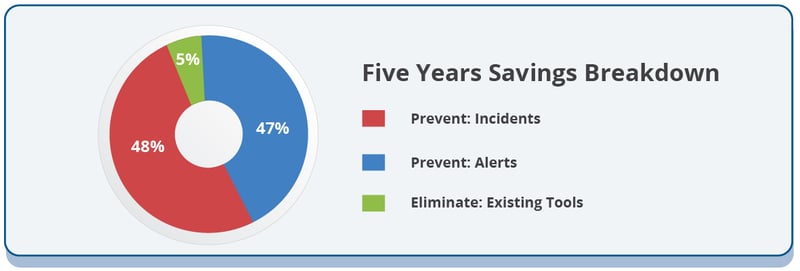In my previous post on new approaches to managing hybrid cloud environments, I discussed the issues that commonly arise for IT operations teams. While hybrid cloud gives IT great flexibility to design infrastructure that’s uniquely suitable to diverse business and user requirements, it also brings about more complexity. Hybrid and multi-cloud businesses generate significantly more IT event data and its coming from many more places now.
Specifically, ITOps teams are dealing with:
- More alerts and events in general
- More globally-distributed events, such as clickstreams, transactions and machine-generated events from mobile and edge devices
- More complex events with cross-silo ramifications
By adopting a Digital Operations Command Center framework, all these events are handled automatically in a central location or platform that integrates other tools, using AI and policy-based features that help determine the root cause of cascading, cross-silo, and concurrent alerts. This can help IT regain control of alerts in a more unpredictable, dynamic infrastructure environment. Here’s how organizations can see value:
A seven-figure ROI
Let’s look at an enterprise with 10,000 IT resources – any of which can trigger an alert. Using analyst-validated data compiled from actual users of a Command Center framework, as shown below, we see the overall impact on ROI.
|
Alert and Event Management Data |
Industry Average |
| Average alerts per resource per month | 5 |
| Traditional tool alert correlation/suppression/de-duplication (% reduction) | 5% |
| Command Center tool alert correlation/suppression/de-duplication (% reduction) | 60% |
| Time spent triaging an alert (minutes per alert) | 5 minutes |
| IT Ops FTE burdened rate per year | $90,000 |
| % of alerts that become incidents - Traditional tools | 10% |
| % of alerts that become incidents – Command Center tools | 8% |
| Incident creation time per incident (minutes per incidents) | 1 minute |
Industry averages for computing alert and incident OPEX.
An enterprise with 10,000 IT resources can reduce OPEX by $1.2 million per year with a Command Center framework that centralizes alert and event management and uses AI to automate processes.
By lowering OPEX significantly, in this example, and coupled with savings from eliminating redundant tools, this enterprise had a nine-month payback after converting to a Command Center structure. The breakdown of savings over a five-year period is shown in Figure 1.

The money saved over five years with a Digital Operations Command Center
To see how a Command Center framework can impact your OPEX, an easy-to-use ROI Calculator requires only the number of resources in your infrastructure. Use the defaults listed in Table 1 or enter customized data to get a more accurate report for your environment.
The evolution to hybrid cloud infrastructures has created pain for alert and event management, but that’s about to change. The Digital Operations Command Center framework offers a way for CIOs to rethink how they use IT staff allowing, for example, the automation of the first response or an incoming alert, significant noise reduction, faster incident resolution, and better service to the business with technology that can highlight a capacity or performance degradation before it becomes a serious problem.
Hybrid cloud and multi-cloud strategies hold great promise in helping CIOs bridge the gap between traditional and modern, cloud-native IT shops. Businesses can actually have their cake and eat it too: acquire economies of scale and on-demand innovative cloud technologies to grow the business while still maintaining complete control over high-risk applications and workflows. Yet without ITOps maintaining order behind the scenes, none of this may come to fruition. Consider how your operations team needs to shift and adapt tools, processes, and skills to meet the needs of an increasingly amorphous digital workplace.
Next Steps:
- Read about hybrid cloud strategies: Rethinking Data for AIOps-Driven IT Operations
- Follow OpsRamp on Twitter and LinkedIn for real-time updates and news from the world of IT operations.
- Read our coverage of the Top ITOps news of 2019.






